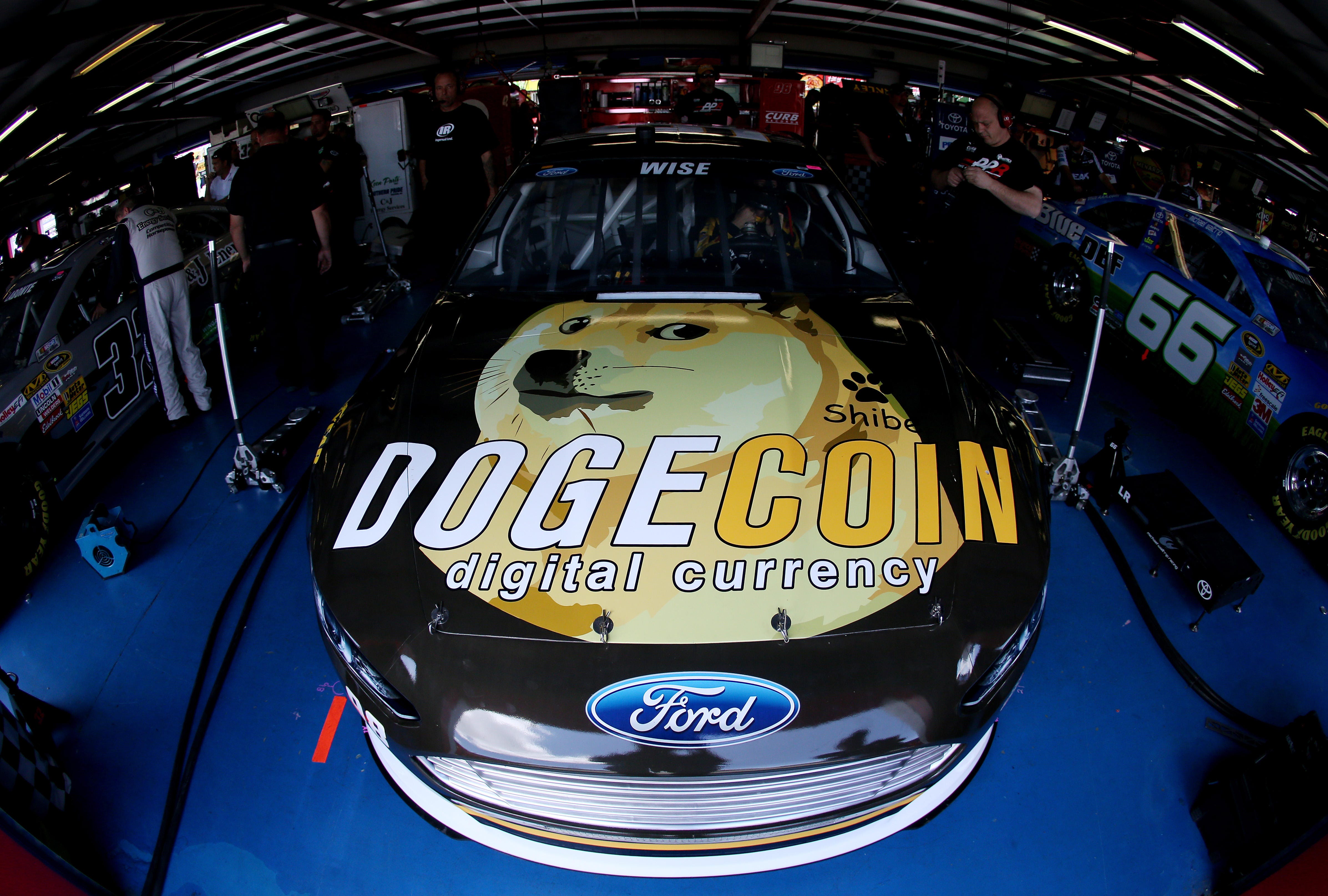June 22, 2014. Jackson Palmer, a self-identified “average geek,” is high in the stands at a Nascar race at the Sonoma Raceway in California. He is an Australian man in his 20s. He has zero interest in racing. Never in his wildest dreams did he imagine it would come to this.
He surveys the scene.
Below him: a tremendous crowd. The overwhelming blare of engines. Hurtling round at tremendous speeds: the #98 Moonrocket, a high-performance racing car. No different from the other cars on the track, except for one crucial detail.
On the bonnet of the car: a dog. A Shiba Inu, more commonly known as a “Shibe,” the dog made famous in the Doge meme that was popular in 2013.
Emblazoned on top: the word “DOGECOIN” in all caps. Below: “digital currency”.
Palmer describes the situation using words like “crazy,” “surreal” and “nuts.” He remembers this moment as a “reality check.” Dogecoin was a tweet, then it was a cryptocurrency worth money in the real world. Six months later, he watched as a joke that he’d made in passing somehow manifested itself into something tangible. A Dogecar in full flight.
It reminded Palmer how insane the world could be.
This is the story of Dogecoin, the joke that became too real for its own good.

The next big thing
Dogecoin is a cryptocurrency, a form of digital money that, much like bitcoin, enables peer-to-peer transactions across a decentralized network. One important difference: bitcoin is the original blockchain proof-of-concept. Bitcoin is ground-breaking. Bitcoin is (some believe) world-changing tech with the potential to transform how money works in the 21st century.
Dogecoin is a digital coin with a picture of dog on it.
“It is a puzzle to me why Dogecoin is so highly valued,” says Adrian Lee, a senior finance lecturer at the University of Technology in Sydney.













+ There are no comments
Add yours